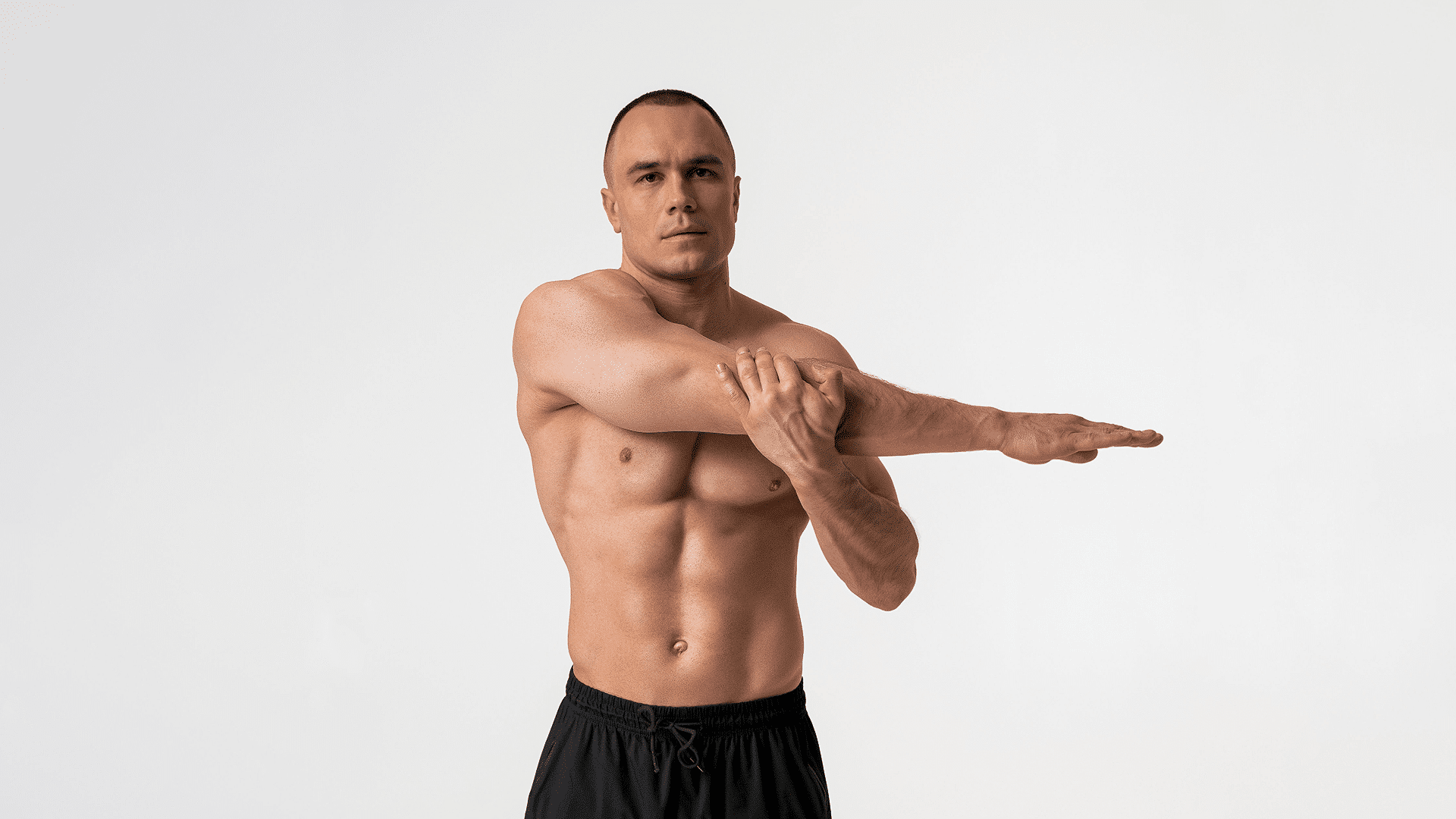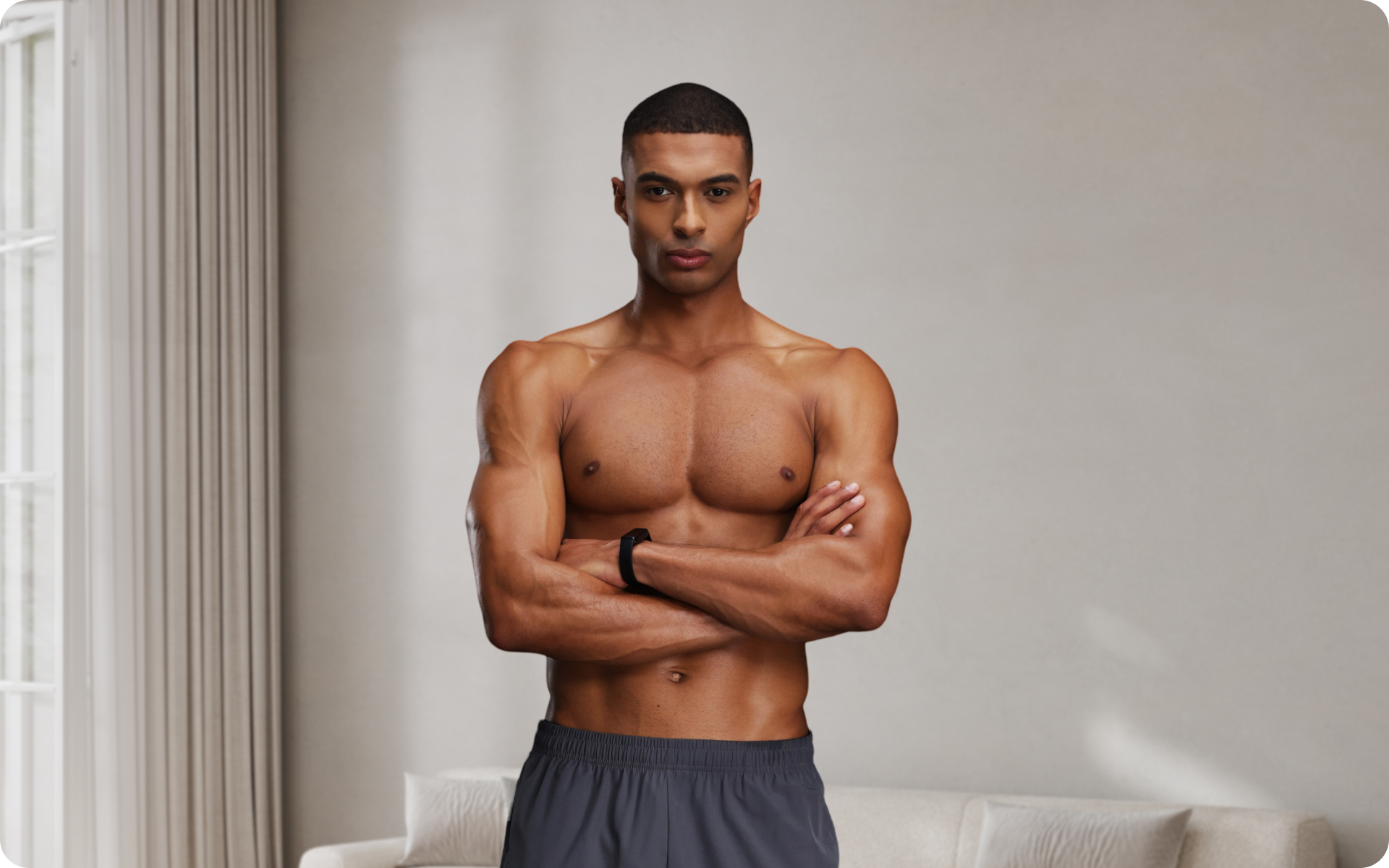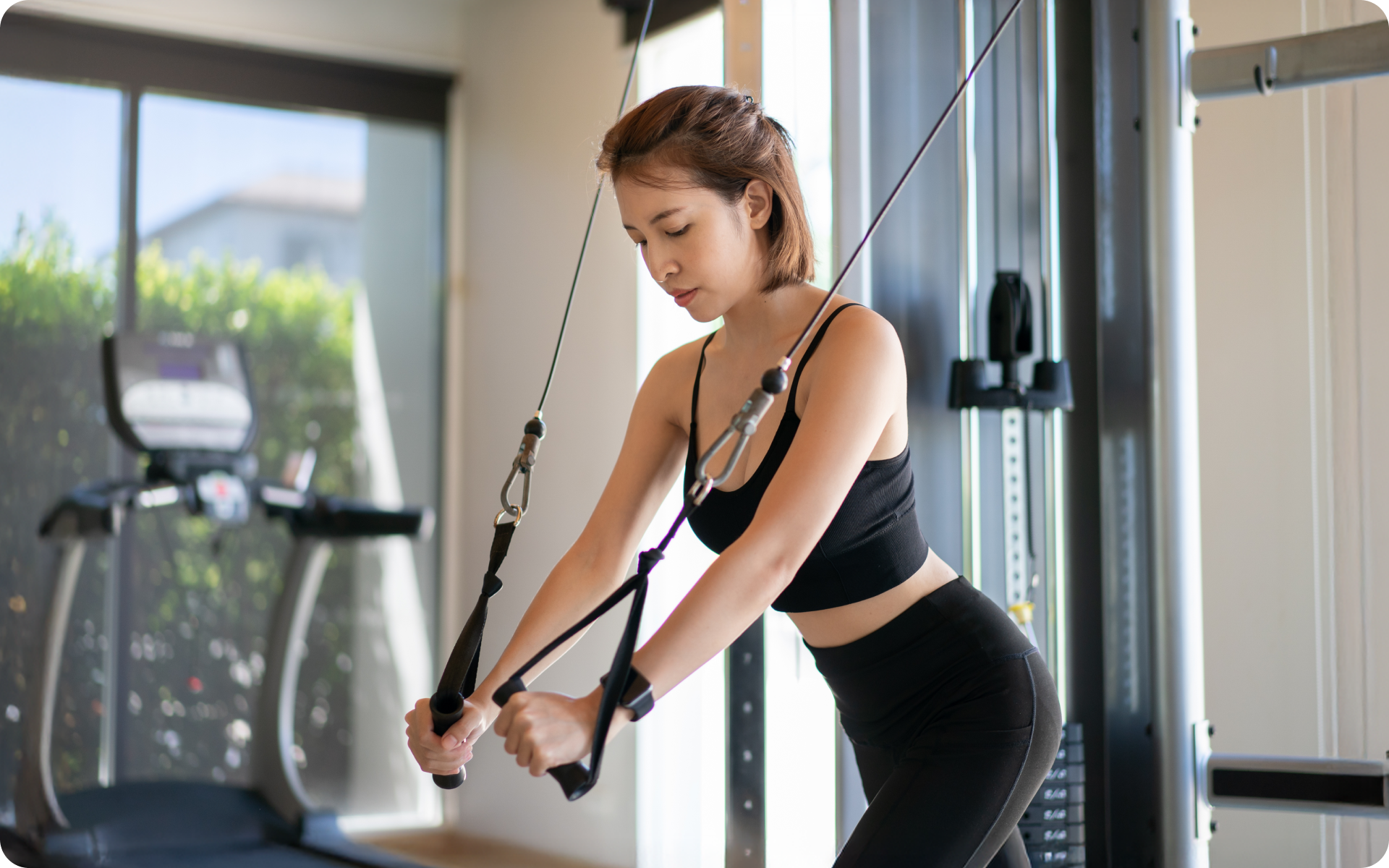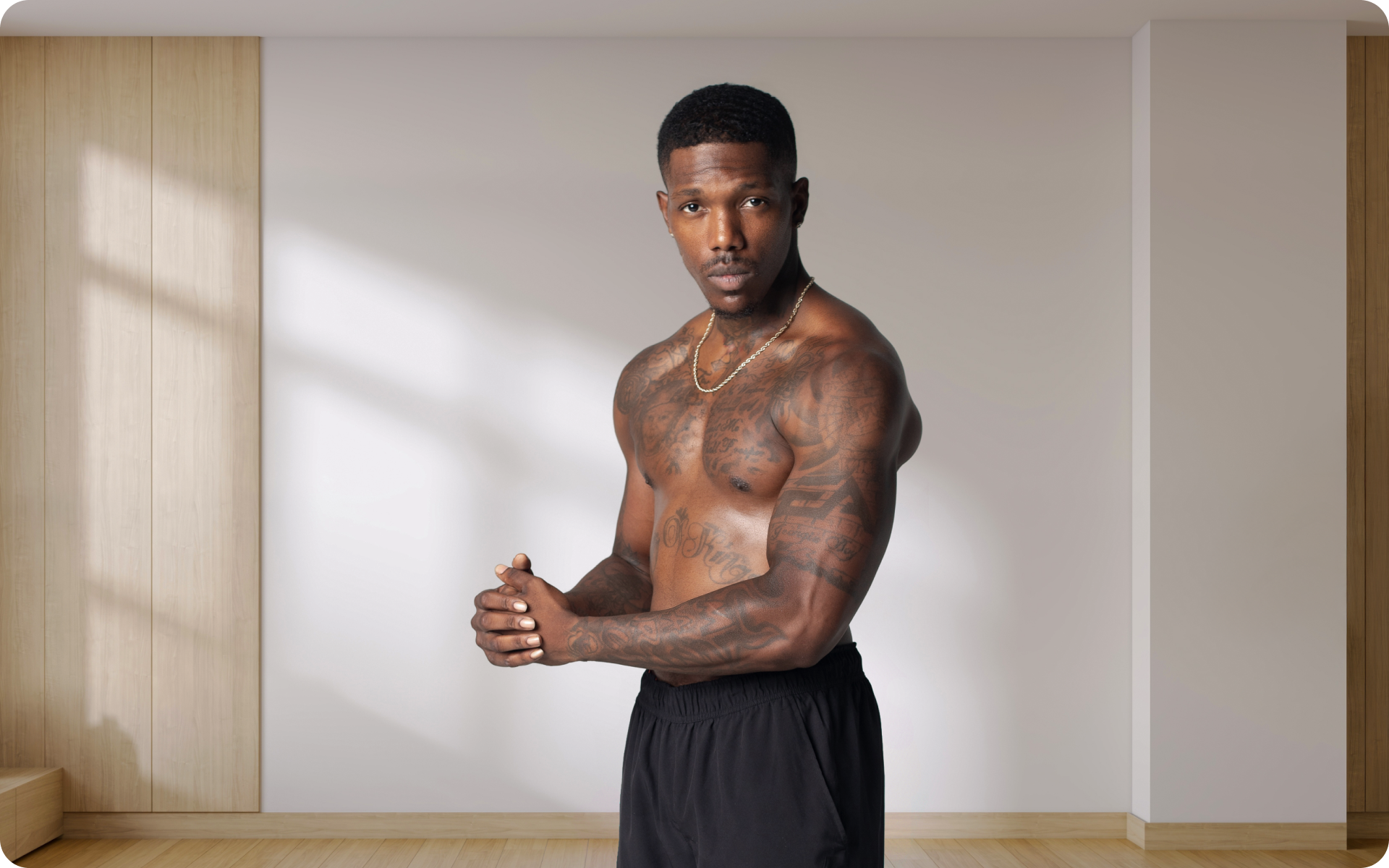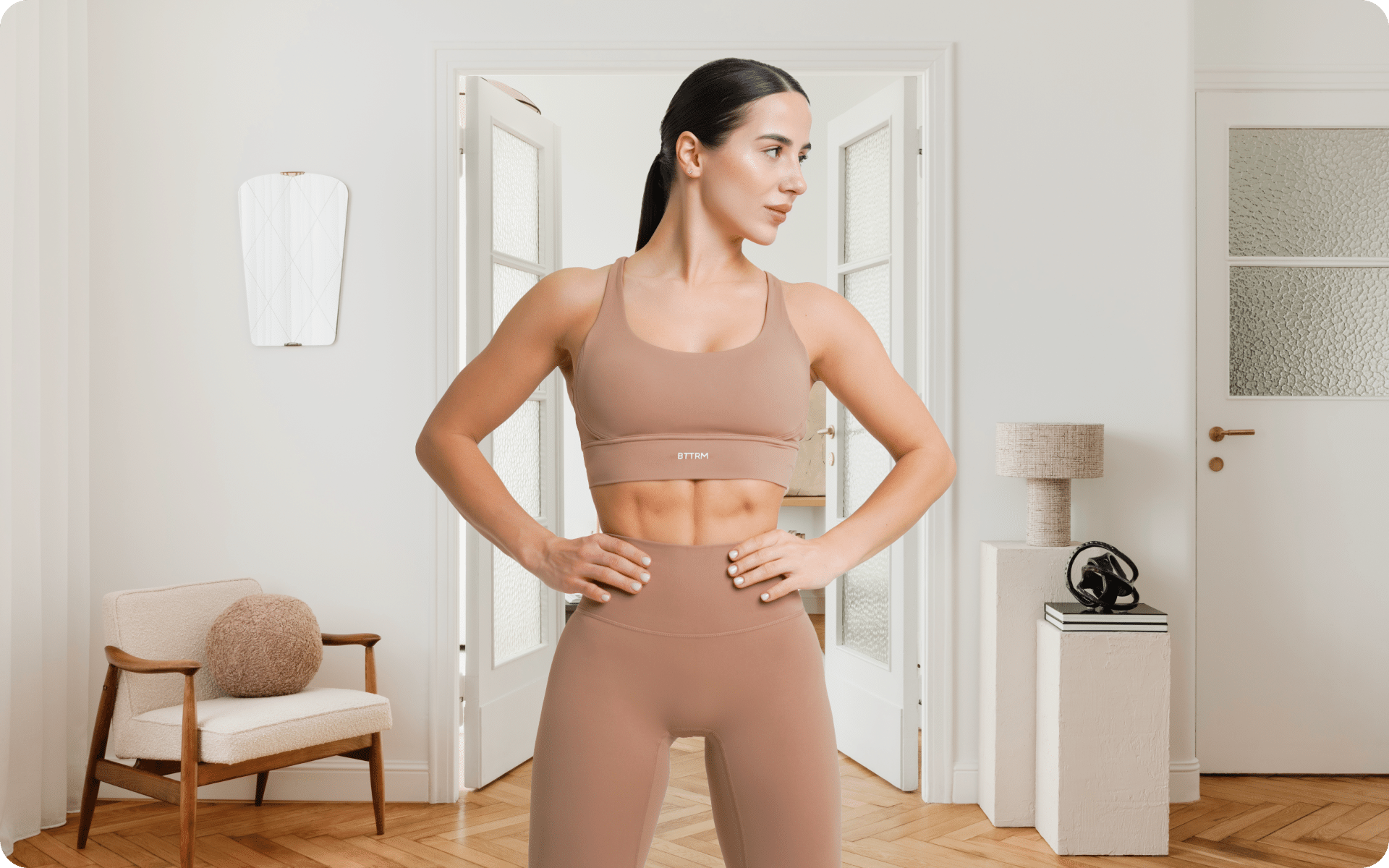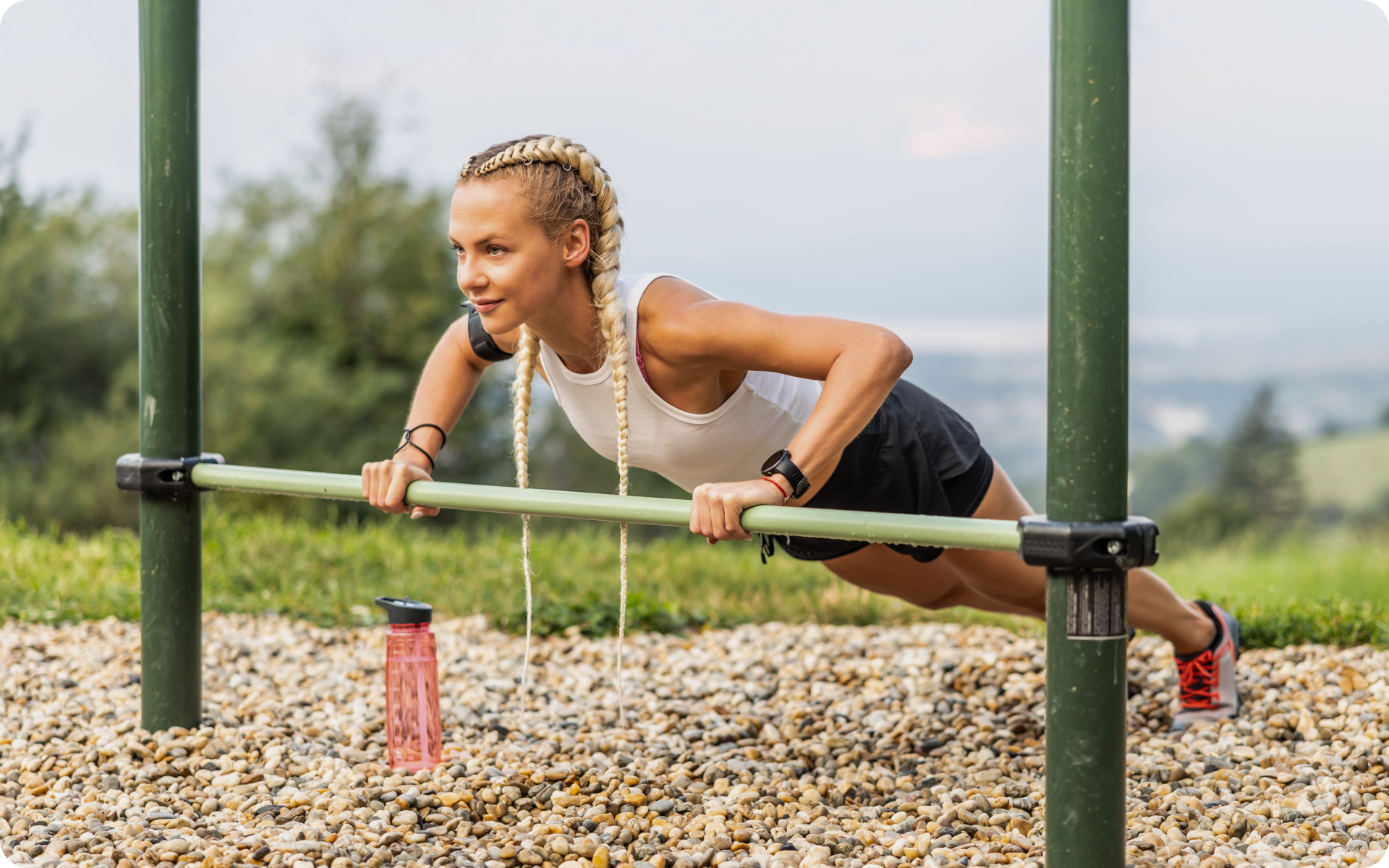In a fast-paced world where health and convenience go hand-in-hand, home calisthenics workouts have become the ultimate powerhouse of transformative fitness. You don’t need any expensive equipment or fancy gyms. Learn the art of calisthenics and start an incredible fitness regime.
You may be wondering what calisthenics means. Calisthenics are the exercises you do without equipment, i.e., using your body weight.
Do you think this sounds weird? You may be questioning the efficacy of calisthenics compared to gym workouts. It turns out that bodyweight exercises can be more effective than using exercise equipment. Let’s explore this in more detail.
Can I Train in Calisthenics at Home?
The best aspect of calisthenics is that you can perform them anywhere, even in the comfort of your home. It doesn’t matter if you are on vacation in a far-off place or don’t have the energy to hit the gym – you can easily do calisthenics.
Calisthenics have been popular since the 19th century and were first developed in ancient Greece due to their exceptional health benefits. Calisthenics have proven their efficacy in the treatment of a variety of health conditions, from obesity to COPD (2).
Furthermore, calisthenics can help enhance your flexibility and mobility and gradually build strength so you can perform your domestic chores more efficiently (1).
Can You Bodybuild With Just Calisthenics?
You can build muscles with a home calisthenics workout – no equipment is required.
You don’t necessarily need to lift barbells or dumbbells to build muscle. In fact, your muscles can grow as long as you use adequate resistance and tension. Calisthenics work by inducing muscle hypertrophy, i.e., exerting tension on your muscles. The more force you exert, the more your muscles will respond and grow (1).
The brain cannot distinguish between our own weight and dumbbells. So, there is always a margin to go beyond dumbbells and weight lifting. Push-ups and pull-ups are considered to be an ideal calisthenics workout for beginners.
Our bodies exert ample tension on the muscles during these exercises. This helps train and grow the muscles. As with other gym exercises, you should learn to change and enhance your workout so your body can rapidly grow attuned to the tension (5).
For example, if you have been doing traditional push-ups for a week, you should make a slight variation by changing to pike push-ups. It is best to do progressive overload to ensure continued muscle growth (7).
If you tend to let yourself off the hook, raise the white flag when things get tougher than you expected, send yourself on an unconscious binge-eating trip – BetterMe app is here to help you leave all of these sabotaging habits in the past!
In the following sections, we have dissected calisthenics in more detail for your information. A home calisthenics workout plan generally comprises (7):
Push Calisthenics Exercises
These exercises can train the anterior side of your upper body, which includes the chest, shoulders, and triceps. The most common push calisthenics are pushups or handstands.
Pull Calisthenics Exercises
Pull exercises can train the muscles in the posterior side of your upper body, which include rhomboids, lats, trapezius, rear shoulders, and biceps. You may need a pull-up bar or gymnastic rings to perform pull exercises. The most common pull calisthenics are pull-ups or the bodyweight row.
Leg Calisthenics Exercises
Leg calisthenics can train the muscles in the lower body, which include the quadriceps, hamstrings, and gluteal muscles. The most common leg calisthenics are squats, lunges, and hip extension exercises.
Read more: Calisthenics Arm Workouts: Build Massive Arms Without The Gym.
What is the Best Home Calisthenics Workout?
Now that you understand the basics of calisthenics, let’s discuss the best workout for beginners at home without equipment so you can build the body of your dreams.
However, there are certain precautions you must consider before you start your calisthenics home workout plan.
- You should warm up and stretch your body to ensure it is ready for exercise.
- Start with basic exercises to prepare your body. Don’t overstress your body, or you may risk injury.
- Always take a few breaks between sessions and take rest days to ensure your body recovers from the damage.
- Stretch and cool down your body after a workout to prevent delayed onset muscle soreness (DOMS) (4).
- Increase your water intake to ensure you remain hydrated.
Here is a sample workout plan that you can follow at home:
Warm-up
The most important part of any workout is the warm-up. Without warming up your muscles, you may experience injury or soreness (10). It is vital to warm up and prepare your muscles for what’s coming next. A 5-minute warm-up is sufficient to prepare your body. You can do 30-second jumping jacks, lunges, or squats.
Push-ups
The first exercise is the push-up. Push-ups are popular worldwide due to their versatility and efficacy. They help build arm muscles and increase strength in the long run. Push-ups are performed as follows:
- Find a comfortable space in your home.
- Kneel and place your hands in front of the ground.
- Ensure your palms are pointing straight ahead.
- Assume the plank position by extending your legs fully on your toes.
- You can look ahead or downward, but it is important that you feel comfortable.
- Start by pushing your body down toward the ground.
- Lower your body as low as possible, ensuring it maintains slightly above the ground.
- Use your hands to engage your core and lift yourself to the starting position.
- Repeat the motion for 10 reps.
If you find this variation difficult, you can perform easier push-ups such as wall push-ups, or if you want to increase the difficulty, try pike push-ups.
Pull-ups
The second exercise is the pull-up, which comes under the category of pull calisthenics. You may find them challenging at first, so you should start by performing them on a chair and then proceed with a pull-up bar. Here’s how to perform a pull-up:
- Find a sturdy bar you can hang from.
- Grab the bar with your hands shoulder-width apart. Keep your arms fully extended and your palms facing away from you. Your grip should be firm.
- Hang from the bar and allow your body to extend fully.
- Bend your elbows and pull your body up toward the bar. Imagine you’re trying to bring your chest close to the bar.
- Continue pulling until your chin is above or near the bar.
- Lower yourself slowly and return to the initial hanging position.
Dips
If push-ups aren’t your thing, you can try dips. For this, you will need a dip bar or two surfaces from which you can perform drops. To perform a drop:
- Place a dip bar on the ground.
- Stand close to the bar and grab the handles with your hands.
- Lift yourself using your arms and bend your elbows.
- Exert pressure on your triceps and lower your body using your forearms.
- Lift yourself using your arms and repeat for eight reps.
Bodyweight Squats
Bodyweight squats are the most common calisthenics workout that can be performed at home. Many fitness lovers prefer this exercise due to its intense duration and power. There are hundreds of squat variations you can do at home. Squats are performed as follows:
- Stand on the ground with your feet shoulder-width apart.
- Point your knees slightly sideways.
- Get into the squat position by bending down slowly and exerting pressure on your thighs.
- Continue squatting until you reach midway.
- Return to the standing position and repeat.
You can also try squat variations such as sumo squats or jumping squats. To perform a jumping squat, assume a squat position and jump when you stand up.
Crunches
Crunches are everyone’s favorite home calisthenics abs workout. They are a proper abdominal exercise that targets muscles in the midsection. To perform crunches:
- Lie on the ground.
- Place your hands behind your head and interlace them.
- Bend your knees and place your feet on the ground.
- Exert pressure on your core and bring your head toward your knees.
- Return to the starting position slowly to lift again.
- Perform crunches for 12 reps.
Burpees
If you are looking for challenging and intense calisthenics, you should try burpees. They are a full-body exercise that combines cardiovascular conditioning with strength training. To perform burpees, you should:
- Stand on the ground with your feet shoulder-width apart.
- Bend your knees and assume the squat position.
- From the squat position, get into the plank position.
- Stay there for a second and perform a push-up.
- Quickly get up and do a jump.
- This is one rep. Do burpees for five reps.
Is Calisthenics Just Body Weight?
It is often assumed that calisthenics and bodyweight exercises are the same. However, you should know that there is a slight difference between them. Calisthenics are exercises that are performed without gym equipment using your body. But this doesn’t mean you must only stick to using your body weight.
As you progress and become stronger, you must do progressive overload and perform advanced exercises. Therefore, you should consider wearing weighted ankle straps or belts holding kettlebells to increase the intensity.
Can I Only Do Calisthenics Every Day?
You can perform calisthenics every day without overstressing or hurting your body, but your body also requires rest after an intense workout to regain energy. The idea is to exercise your muscles adequately without pushing them beyond the limit. To do calisthenics daily, you must perform light exercises with fewer reps, such as push-ups or squats.
You should initially keep it slow and steady to allow your body to adapt to the routine. But as time passes, you can increase your intensity and reps.
Here is a sample 6-week workout plan at home that you can perform at home for immediate results (6):
Monday: Leg Day
Warm up for 5 minutes and then perform:
- 20 squats
- 10 calf raises
- 10 squats
- 8 alternating lunges
- 15 side lunges
Tuesday: Arm Day
Warm up for 5 minutes and then perform:
- 50 pull-ups
- 10 chest dips
- 10 push-ups
- 8 push-ups
- 5 plank wall exercises
- 30-second plank
Wednesday: Rest Day
Thursday: Arm Day
Warm up for 5 minutes and then perform:
- 10 crunches
- 15 leg raises
- 15 oblique crunches
- 15 flutter kicks
- 1-minute plank
Friday: Cardio
- 20 minutes of yoga
Saturday: Full Body Workout Day
Warm up for 5 to 10 minutes and then perform:
- 10 pull-ups
- 10 chin-ups
- 15 dips
- 10 jump squats
- 15 push-ups
- 25 crunches
- 5 burpees
- 30 seconds jumping rope
Sunday: Rest Day
Reasons why BetterMe is a safe bet: a wide range of calorie-blasting workouts, finger-licking recipes, 24/7 support, challenges that’ll keep you on your best game, and that just scratches the surface! Start using our app and watch the magic happen.
What are the Different Types of Calisthenics?
Calisthenics is not solely limited to home workouts. There are six types of calisthenics.
Freestyle Calisthenics
Freestyle calisthenics is inspired by gymnastics. They are mostly done on parallel or horizontal bars. Some common freestyle calisthenics include extreme muscle-ups, double bar hops, clapping dips, clap muscle-ups, and 360 muscle-ups.
If you are a beginner, you should be careful as freestyle calisthenics can be intense, and you may harm yourself. It is better to perform these exercises supervised by a trainer.
Aesthetic Calisthenics
Bodybuilders mostly do aesthetic calisthenics before competitions to give their bodies an aesthetic appeal. This is generally done with other bodyweight exercises to train their muscles and make them look more toned in shows.
Street Calisthenics
Street calisthenics is performed in the street, hence the name. Individuals flaunt their skills in public and perform various calisthenics such as shrimp squats, handstands, or one-arm pushups.
Flexible Calisthenics
Flexible calisthenics enhances flexibility and is effective for those who wish to regain mobility following an injury. Handstands for extended periods come under flexible calisthenics. If you are a beginner, you should do it under the provision of a trainer to avoid injuries.
Military Calisthenics
Military calisthenics is all about strength training and includes push-ups, pull-ups, or sit-ups. It is often claimed to be the best calisthenics home workout plan for building muscles.
Static Calisthenics
The last variation is static calisthenics, where you must hold a particular position for a long time. Beginners can easily perform this as it starts with small reps.
You can increase reps and intensity when you gain control and momentum. The most popular static calisthenics is the planche or front lever.
Read more: Core Workouts Calisthenics Edition: The No-Gym Approach To Building Functional Fitness.
What are the Benefits of Calisthenics?
Calisthenics can be effective for building muscle, and improving strength and stamina. Adults should perform a minimum of 150 minutes of moderate-intensity exercise each week in order to maintain fitness (5).
Here is a quick round-up of benefits of calisthenics for your body:
Increases Strength
Calisthenics can help build muscles as you use your body weight. Exercises such as push-ups and pull-ups use the body’s strength to lift. This exerts tension and causes muscles to grow and increase in strength due to hypertrophy.
During rest days, your muscles can grow as the microscopic gaps in them receive new muscle fiber, which results in bigger, stronger muscles.
Enhances Stamina
Calisthenics has the potential to improve your stamina over time. As you gradually increase the number of repetitions or exercise duration, you train your muscles to withstand fatigue over an extended period. This will improve muscular endurance, which will allow you to perform tasks for longer without feeling tired.
Improves Balance
In addition to stamina and strength building, calisthenics can improve your balance and posture as you support your body when you perform these bodyweight exercises (9). This can improve your motor skills and give you better body control.
Boosts Mental Well-being
In addition to improving physical health, doing calisthenics will improve your mental health, as exercise makes you feel accomplished. Pushing through challenging activities, dealing with discomfort, and remaining motivated during a workout may improve your mental fortitude. This mental resilience translates to better stamina in various aspects of your life.
Helps Fight Diabetes
Calisthenics has been proven to fight diabetes as it regulates blood sugar levels and manages BMI (8).

How Many Calories Does Calisthenics Burn?
The number of calories burned during calisthenics exercises varies according to body weight, intensity, duration, and the specific activities you perform. On average, calisthenics burns between 200 and 600 calories per hour, depending on factors such as body type, fitness, or weight (3).
The Bottom Line
A home calisthenics workout is the best way to build muscles and strength quickly without hitting the gym. As with many other workouts, it comes with certain risks that you need to be aware of. You should consult your physician if you have any medical condition.
Also, it is important that pregnant women stay away from intense calisthenics. They should consult their gynecologist and find easy at-home calisthenics workouts to perform in order to remain active.
Therefore, from beginners who are aiming to build a solid foundation to fitness enthusiasts who are looking for innovative challenges, calisthenics offers multiple exercises that can be modified to suit individual capabilities. Whether you prefer push-ups, squats, planks, or more advanced moves such as handstands and muscle-ups, the versatility of calisthenics ensures workouts are engaging and ever-evolving.
It’s time we stop thinking about calisthenics and dive into the exciting world of calisthenics!
Frequently Asked Questions (FAQs)
Is calisthenics enough to get fit?
While calisthenics builds muscles and enhances stamina, you cannot entirely limit yourself to calisthenics as the human body grows and adapts rapidly. If your goal is to remain active, you can perform daily calisthenics, but if you want to become super fit, you must combine it with other strength-training exercises.
Is a gym required for calisthenics?
No, you don’t need a gym to do calisthenics. This is the best aspect of this type of exercise. You can perform intensive exercises at home without equipment or gym space. All you need is a comfortable corner and you are good to go.
Can I learn calisthenics at home without equipment?
You can learn calisthenics at home as you only use your body initially. You can start by doing basic calisthenics such as push-ups, squats, or lunges, and gradually increase intensity and difficulty.
DISCLAIMER:
This article is intended for general informational purposes only and does not serve to address individual circumstances. It is not a substitute for professional advice or help and should not be relied on for making any kind of decision-making. Any action taken as a direct or indirect result of the information in this article is entirely at your own risk and is your sole responsibility.
BetterMe, its content staff, and its medical advisors accept no responsibility for inaccuracies, errors, misstatements, inconsistencies, or omissions and specifically disclaim any liability, loss or risk, personal, professional or otherwise, which may be incurred as a consequence, directly or indirectly, of the use and/or application of any content.
You should always seek the advice of your physician or other qualified health provider with any questions you may have regarding a medical condition or your specific situation. Never disregard professional medical advice or delay seeking it because of BetterMe content. If you suspect or think you may have a medical emergency, call your doctor.
SOURCES:
- 8 Calisthenics Exercises for Beginners (2023, healthline.com)
- COPD patients (2014, respiratory-research.biomedcentral.com)
- Calories burned in 30 minutes for people of three different weights (2021, health.harvard.edu)
- Delayed onset muscle soreness (DOMS) (n.d., physio-pedia.com)
- Resistance training – health benefits (n.d., betterhealth.vic.gov.au)
- Should You Do Calisthenics Every Day? (What You Should Know) (2023, totalshape.com)
- The Complete At-Home Calisthenics Workout [Only 30 Min/Day] (2023, whitecoattrainer.com)
- The Effect of Calisthenics on Hypoglycemic of Diabetic Patients (2022, ncbi.nlm.nih.gov)
- The effects of a calisthenics training intervention on posture, strength and body composition (2017, researchgate.net)
- Why warming up is crucial for injury prevention and performance (2023, longevity.technology)

